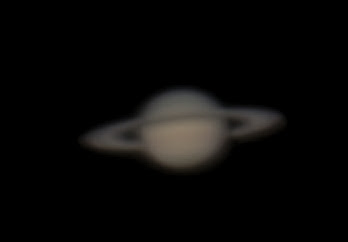Last night was a great night for observing orbital things, in theory. The space shuttle, a number of rocket bits and pieces and various other satellites were all scheduled to pass overhead.
However, that was the theory. In practice there was an awful lot of cloud about. None of that wispy mostly transparent stuff. No, this was thick piled up stuff as dense as you like. But - it wasn't wall to wall, at least not all the time.
Anyway - I went out to try and spot the ISS - although it was a bright pass, the time was not good, as the sky was still a faint bluey colour, the sun not having set very long ago. I could see a couple of the brighter stars after a while and the ISS should be magnitude -1.8 which is brighter than pretty much anything else in the sky other than the moon, but it wasn't looking good for the 3rd magnitude rocket bit that was coming over at the same time. I managed to spot the ISS eventually, but it wasn't the bright object it normally was.
I skipped most of the other passes as they were not very bright and with the large covering of cloud, would be difficult to spot. However there was an iridium flare scheduled for about 5 minutes to 10. The
iridium satellites are a whole group of orbiting communication satellites, that have a highly polished panel attached, that if it happens to be in just the right orientation reflects the sun very brightly. There are programs to predict these events, I used the
heavens above site.
I set up my point-and-shoot digital camera on video mode on a tripod pointing roughly in the right direction to try and spot it. I waited until about the right time, and then pressed the button and hoped that it was pointing about right, and that nasty bank of cloud would not obscure it.
What do you know, I saw it and caught it too!
It looks better at the original resolution, but you can see a bright dot at least. It is magnitude -7 or so, which is very bright indeed.




